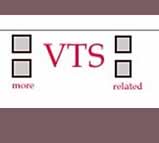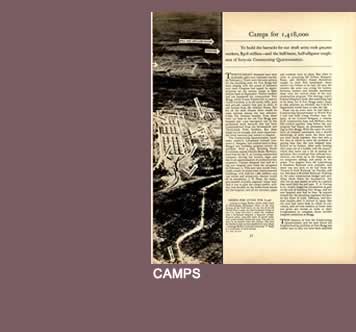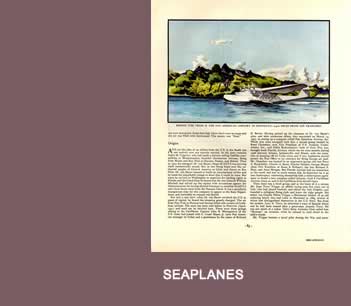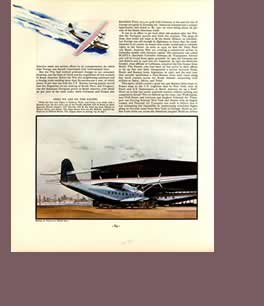Millard Sheets (1907-1989, a distinguished artist, particularly in Mural Painting and art education. He was associated with the California Watercolour School. There is a terrific interview with Sheets in the Smithsonian Institiute conducted by Paul Karlstrom. This excerpt gives a flavour of the man's spirit.
"... when I grew up in the twenties I was certainly much aware of what was going on in the art world. I didn't start school until 1925. I had had these connections with some of the finest painters, who gave me not only wonderful background—whatever I should have—but they gave me a real sense of what was going on in California at the time. In fact, to a certain degree, what was going on in the world. I would have to say that we had a group of people that were well-established when I was just a child, who painted California in the most romantic sense. They painted—it's sometimes referred to- not lovingly, and it should be, really—the Eucalyptus School. They are people that painted the hills, the foothills of Pasadena, and all the eucalyptus groves and the mountains—which were very clear in those days; we had no smog.
PK: The good old days, right?
MS: And they used to paint them with beautiful light, lovely atmosphere, and they wouldn't have hurt a flea. It was a nice kind of painting that about fifteen painters were deeply involved in. Their names are very easily accessible in all the books, books written about them.
PK: Yeah, I think we know who some of them are.
MS: There's no point in spending time to go over those now. But I grew up with these people. Not with the idea that I ever wanted to paint that way, from the very beginning. It didn't particularly excite me, but I had admiration for the fact that they did things so beautifully and so simply.
There was second group of people who were largely people who had transferred from the east in their middle age or the latter part of their life, who represented everything from American Impressionism to [painters, phases] of the New York school, various kinds. And this second group wasn't organized like the first group was, almost as a simple batch, and a group of people that not only painted well but brought a great deal to the community. There's no doubt about that. And they gave something that I think meant a great deal even at that time.
Now the third group is a group that I certainly belong to. We are born here. We grew up here. We had no real museums. We had a small collection in the L.A. Museum of American Art, and it was in the old, old History I mean Science and Art Museum, and there were no exhibitions, even when I grew up. There were no magazines. There were no art books. There were no radio or television programs on art. It was simply a destitute area as far as getting any kind of basic knowledge of the meaning of art, the purpose of art, the reason for its existence. We thought of painting as being a very important thing just to do because you wanted to do it as an ego trip. But there was none of the philosophy or the kind of thing that has guided artists through thousands of years to produce for the good of society, regardless of how simple or simplistic or how primitive or how aesthetic the advance of society should be. There was none of that, absolutely none of that! So the whole group of us that ended up going, mostly going to Chouinard School just loved the country we lived in. We just loved to paint it. And we loved to paint every little aspect of it. We loved to paint the rivers, the erosions, the downtown. Everything! To me there was no limit to what people were interested in and everybody painted anything or everything. And we grew up in almost total ignorance of any kind of aesthetic history or philosophic experience, that took us some time later to learn. And our enthusiasm and our just excitement in each other, in working with each other, was very strong. It was something that is now called the California School, because they have no better name for it, I guess.
It's a group of people that I think grew up in a time when there was nothing to do but to do it. There was nothing to get any real sense of style or any kind of inspiration from except the pure fun of painting our golden hills and our green hills and our sea, and we ran around like maniacs going to the desert. Sometimes in groups of five or six at a time, we'd camp out there on the ground and paint for three or four days, till we couldn't stand it any longer and we'd go home. And we'd do the same thing going down to the places like the—well, this wonderful place in San Pedro where they had the fishing fleet.
PK: Was that Point [Fermain]?
MS: No, for the moment that's gone out of my mind. I'll think of it in a moment. But it was. . . .
PK: Near Palos Verdes, though, wasn't it?
MS: No, it was near San Pedro.
PK: No. Oh, okay.
MS: And it was so, it was very important as a fishing village. They did, oh, tremendous, had tremendous catches. It was mostly Japanese. There were a few others, but largely Japanese. They had sumi wrestlers come over from Japan. It was very dramatic and exciting to see them, and they were very nice to us, and they accepted us as (chuckles) kind of an inevitable thing that would be down there a lot. And I practically lived down there for summertime.
PK: Hmm!
MS: I would go down and camp, and I would, and I wasn't alone. Phil Dike and Phil Paradise, the whole group of guys used to go down, and we'd paint the fish harbor, which was, it was a very exciting thing, because the boats were coming in with these great batches of fish. They were being unloaded, they were being handled in the, inside the building where the fish were either prepared for canning or prepared for market. And we saw it all. And we knew the fishermen so well that it was a very important part of our life, not because we thought it was necessary, [nothing, something] that was a great art project, but it was a great art project for us. It's just something that was so exciting and challenging, and getting up at four o'clock in the morning and watching the boats go out when it was still dark, all the lights. We made just zillions of sketches of every possibility of activity. And then having them come in and seeing them unload. It was very, a very exciting thing, and we're just lucky it existed there.
"
|











